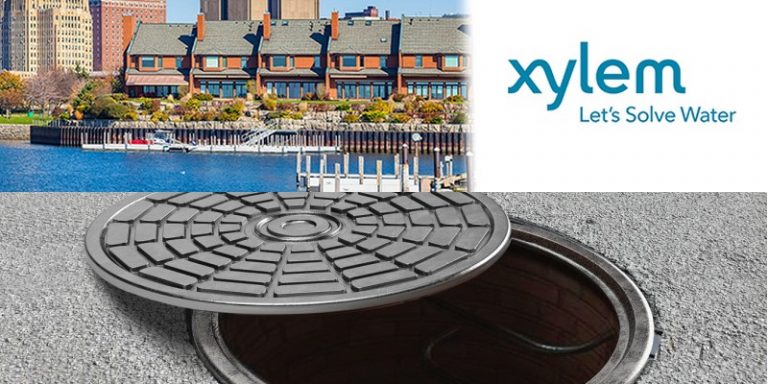
In Buffalo, in the state of New York in the United States, sewer backups are a major problem: nearly 7.5 billion litres of wastewater overflow each year. A significant volume that worries the municipality, which has demanded a decree to improve its collection system. The city decided to collaborate with Xylem, a company that designed the innovative BLU-X solution using artificial intelligence, which allows Buffalo to save several tens of millions of dollars.
A wastewater problem that requires a drastic solution
The architecture and development plans of Buffalo’s city planners during the 20th century did not facilitate the treatment of wastewater in the city. Thus, each year, nearly 7.5 billion litres of wastewater overflow and can unfortunately spill into the drinking water or even worse, create material damage on the surface, as the city’s combined sewer system is poorly designed.
In 2006, officials signed an executive order calling for improvements to Buffalo’s wastewater collection system, as the city’s sewer system is so flawed. A comprehensive watershed improvement plan was designed and appropriate infrastructure was devised.
However, it took several years of negotiations before this control plan was approved, for a total budget of $525 million. This large amount of money required the city to come up with an innovative and affordable solution to solve its wastewater backflow problems.
Xylem’s BLU-X
Solution
Buffalo’s strategy was to leverage new technology to optimize existing infrastructure. Xylem, working with Buffalo’s team of sewer managers and engineers, found a way to expand and improve the city’s sewer system with its innovative BLU-X solution.
Sixteen strategic points were identified for wastewater storage and currently six of them are already operational. The first three storage points have reduced the volume of sewage backflow by 1.7 billion litres over 12 months, 378 million litres more than the city’s sewage managers had estimated.
The BLU-X wastewater system optimization is a clear example of Xylem’s commitment to working with municipal sewer departments and achieving better performance through innovation.
A decision support tool through continuous data acquisition
Another key benefit of the technology is that the BLU-X intelligent platform is designed to continuously improve results. As a new rainfall event occurs (and therefore may cause backflow), the system collects and provides more and more data.
This makes it easier for Buffalo’s sewer managers to plan ahead, which will lead to further reductions in operation and maintenance costs, as well as further reductions in sewer overflows in the future. As part of their current collaboration, Buffalo sewer managers and Xylem will continue to work on coordinating the operations of the points involved.
With this tool, the city is expected to save at least $145 million. With the success of the strategy designed by Buffalo’s sewer managers to address shared sewer overflows, even more infrastructure savings could be realized in the future while meeting environmental, economic and water equity goals.
Translated from Cas d’usage : une solution innovante qui aide les villes à mieux gérer leur réseau unitaire d’assainissement









